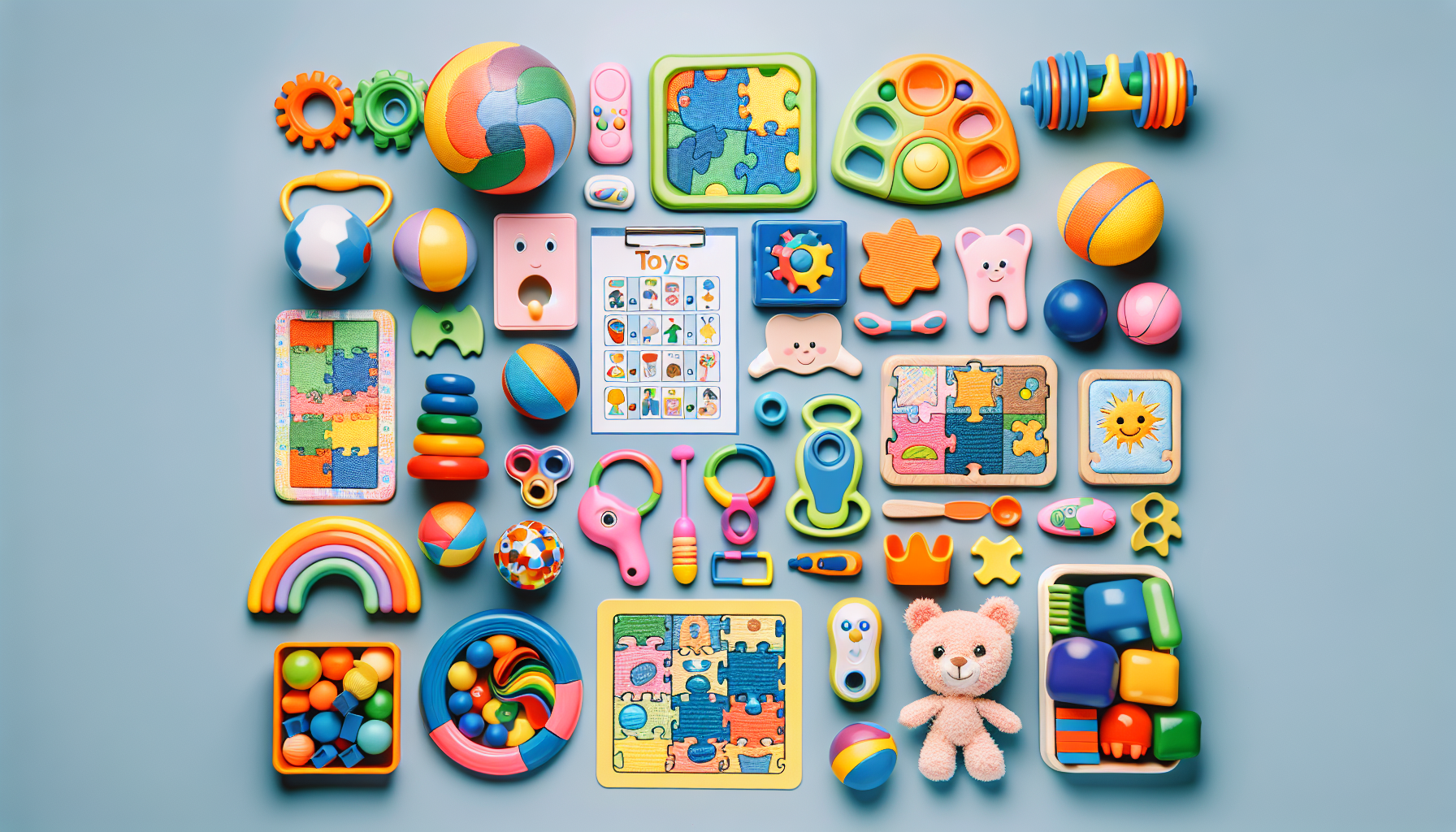Navigating the Spectrum: Recognizing Autism in Women and Girls
Unlocking the spectrum: Understanding autism in women and girls. Explore unique characteristics, challenges in diagnosis, and tailored support.

Understanding Autism in Women and Girls
Autism spectrum disorder (ASD) affects individuals of all genders, but there is a significant gender disparity in its diagnosis. According to the NICHD - National Institute of Child Health and Human Development, ASD is about four times more common in boys than in girls. The ratio of males to females with ASD is approximately 4:1. This disparity has led to a greater understanding of how autism presents in males compared to females.
Gender Disparity in Autism Diagnosis
The gender disparity in autism diagnosis has been a topic of research and discussion. Historically, diagnostic criteria and assessment tools were developed based on observations of males with autism, which may have contributed to underdiagnosis or misdiagnosis in females. The Diagnostic and Statistical Manual of Mental Disorders (DSM-5) criteria for diagnosing autism may be more suited to the way autism presents in boys, potentially leading to underdiagnosis in girls and women. This can result in girls and women with autism not receiving appropriate interventions and supports early on, which is crucial for their development and well-being.

Unique Characteristics of Autism in Females
While autism manifests differently in each individual, there are some unique characteristics that have been observed in females with autism. Girls with ASD often demonstrate restricted interests similar to those seen in boys with ASD. However, they tend to exhibit fewer repetitive behaviors. This difference in repetitive behaviors can contribute to the underestimation of their needs and challenges, leading to a lack of adequate support.
Girls with ASD are also more likely to exhibit internalizing symptoms, such as depression or anxiety. This can further complicate the diagnosis process, as their symptoms may be attributed to other mental health issues rather than autism itself. The unique social challenges experienced by girls and women with autism, such as camouflaging their symptoms or imitating others to fit in socially, can mask the condition and make it harder to detect.
It's important to recognize the distinct experiences of girls and women with autism to ensure accurate diagnosis and appropriate support. Inclusive research that focuses on understanding the female autism experience is crucial for developing effective interventions and strategies. By addressing gender disparities in diagnosis and intervention, we can provide better support and resources for women and girls with autism.
Signs and Symptoms of Autism in Women and Girls
Recognizing the signs of autism in women and girls can be challenging due to the unique ways in which autism can manifest in females. Understanding these signs is crucial for early detection and appropriate support. Here are some common signs and symptoms to look out for:
Camouflaging and Masking Behaviors
Girls and women with autism may engage in camouflaging or "masking" behaviors to fit in with their neurotypical peers. Camouflaging involves imitating neurotypical behavior and masking their own autistic traits to prevent relationship breakdowns. This masking can make it harder to identify autism in females, as they may appear more socially adept on the surface. However, this masking behavior can lead to increased stress and anxiety.
Differences in Social Interaction
Autistic females may exhibit different behavioral and communication patterns compared to males. While they may face challenges in social interactions, they may appear more socially adept due to their efforts to fit in. They may demonstrate more reciprocal conversation skills and have a greater motivation to initiate friendships.
Restricted Interests and Repetitive Behaviors
Girls with autism often exhibit restricted interests similar to those seen in boys with autism. However, their interests may align more closely with those considered "normal" for their age group, such as celebrities, bands, or ponies. It's important to recognize that intense interests may go unnoticed by others due to the perceived normalcy of these interests.
Internalizing Symptoms and Mental Health
Women and girls with autism are more likely to exhibit internalizing symptoms, such as depression or anxiety. The challenges they face in social interactions and the pressure to mask their autistic traits can contribute to the development of these internalizing symptoms. It is crucial to consider mental health and provide support in addition to addressing the core symptoms of autism.
Understanding these signs and symptoms can help in the early identification and diagnosis of autism in women and girls. By recognizing the unique characteristics and challenges faced by females with autism, we can ensure that they receive the appropriate support and resources they need to thrive.
Challenges in Diagnosing Autism in Women and Girls
When it comes to diagnosing autism in women and girls, there are several unique challenges that can impact the accuracy and timeliness of diagnosis. These challenges include diagnostic criteria and gender bias, underdiagnosis and misdiagnosis, as well as the impact of camouflaging and masking behaviors.
Diagnostic Criteria and Gender Bias
The diagnostic criteria for autism spectrum disorder (ASD) outlined in the Diagnostic and Statistical Manual of Mental Disorders (DSM-5) may be more suited to the way autism presents in boys, potentially leading to underdiagnosis in girls and women. The criteria were primarily developed based on observation of behaviors in boys and men, which may not fully capture the unique ways in which autism can manifest in females.
This gender bias in diagnostic criteria can result in girls and women with autism being overlooked or misdiagnosed, leading to delayed intervention and support. It is crucial for healthcare professionals to be aware of these biases and consider the full range of autism presentations in both males and females.
Underdiagnosis and Misdiagnosis
Girls and women with autism are often misdiagnosed or diagnosed later in life compared to boys and men. This can be attributed to the differences in how autism presents in females, as well as the potential underestimation of their needs and challenges [4]. Current diagnostic tools and assessments are primarily based on observations of behaviors in males, which may not capture the subtler signs of autism in females.
Furthermore, research suggests that girls who are more mildly affected may be missed due to the current diagnostic tools being based on observations of behaviors typically seen in boys and men. This underscores the importance of increasing awareness and understanding of the unique presentation of autism in females to ensure accurate and timely diagnosis.
Impact of Camouflaging and Masking
Girls and women with autism often employ camouflaging and masking behaviors to fit in socially, which can make it harder to detect the condition. These individuals may imitate others and mimic social cues, making it challenging to recognize the underlying autistic traits [4]. The effort expended in camouflaging can lead to mental and emotional exhaustion and may contribute to internalizing symptoms such as depression and anxiety.
Research suggests that girls and women with autism may have higher intelligence levels compared to their male counterparts, allowing them to compensate for social difficulties to some extent. This further complicates the diagnostic process, as their abilities may mask the underlying challenges they face in social interactions.
Overall, the challenges in diagnosing autism in women and girls stem from a combination of diagnostic criteria that may not fully capture the female presentation, underdiagnosis and misdiagnosis, as well as the impact of camouflaging and masking behaviors. It is essential to improve awareness, understanding, and research surrounding the unique experiences of females with autism to ensure accurate identification and provide appropriate support.
Importance of Inclusive Research and Diagnosis
When it comes to understanding and diagnosing autism in women and girls, inclusive research and accurate diagnosis play a crucial role. Unfortunately, there is a significant gender disparity in autism research, which has led to underrepresentation and misdiagnosis of females on the autism spectrum.
Gender Disparity in Autism Research
Historically, research on autism has predominantly focused on the male experience, resulting in a significant gender bias in research. The underrepresentation of women and girls in autism research studies has limited our understanding of the unique experiences and challenges they face. Even when efforts are made to minimize diagnostic bias, a three-to-one sex ratio in autism diagnosis is found between men and women [5].
To address this disparity, there is a growing recognition of the need to include more women and girls in autism research. Researchers are actively working towards expanding gender categories to include nonbinary and transgender individuals, ensuring greater inclusivity and accuracy in future studies. By including diverse populations, researchers can better understand the full spectrum of autism and develop tailored interventions and therapies for females with autism.
Recognizing the Female Autism Experience
Recognizing and understanding the unique experiences of women and girls with autism is essential for accurate diagnosis and effective support. Females with autism often exhibit different patterns of behavior compared to their male counterparts. For example, women and girls with autism may display a greater desire to be sociable and may work hard at masking their difficulties in social settings. This masking behavior can contribute to underdiagnosis and misdiagnosis, as females may appear more socially adept on the surface.
Additionally, research has shown that women with autism tend to use different camouflaging tactics, such as developing conversation scripts and making forced eye contact, to navigate social situations. However, excessive camouflaging is closely tied to mental health challenges like depression, anxiety, and suicidality. By recognizing and addressing these gender-specific experiences, healthcare professionals can provide more targeted support and interventions for women and girls on the autism spectrum.
Addressing Mental Health Challenges
Mental health challenges are prevalent among individuals with autism, and this is particularly true for women and girls. The masking behaviors and social pressures experienced by females with autism can contribute to increased rates of depression, anxiety, and other mental health issues. It is crucial to address these challenges and provide appropriate mental health support for individuals on the autism spectrum.
Inclusive research that includes a gender-balanced representation can help identify the specific mental health needs of females with autism. By understanding the intersection between autism and mental health, healthcare professionals can develop tailored interventions and therapies to improve the overall well-being of women and girls on the autism spectrum.
In conclusion, inclusive research and accurate diagnosis are of paramount importance in understanding and supporting women and girls with autism. Addressing the gender disparity in autism research, recognizing the unique experiences of females on the spectrum, and addressing their mental health challenges are crucial steps towards providing appropriate support and interventions for this underserved population. By promoting inclusivity and improving our understanding, we can ensure that women and girls with autism receive the recognition and support they need to thrive.
Seeking Support and Resources
When it comes to autism, seeking appropriate support and resources is crucial for individuals, particularly women and girls who may face unique challenges in diagnosis and intervention. In this section, we will explore the importance of early intervention and diagnosis, the need for tailored approaches for females with autism, and the significance of promoting awareness and understanding.
Early Intervention and Diagnosis
Early intervention and diagnosis play a vital role in improving outcomes for individuals with autism, including women and girls. Unfortunately, girls and women with autism are often misdiagnosed or diagnosed later in life compared to their male counterparts. This delay can result in a lack of appropriate interventions and supports during critical developmental periods.
To address this issue, it is essential to raise awareness among healthcare professionals, educators, and parents about the unique characteristics of autism in females. By recognizing the early signs and symptoms and providing timely interventions, individuals can receive the support they need to thrive.
Tailored Approaches for Females with Autism
Tailoring approaches and interventions specifically for females with autism is crucial for addressing their unique needs and challenges. Research indicates that girls and women with autism may present differently compared to males, making it important to develop strategies that consider these differences. For instance, females with autism may exhibit fewer restricted, repetitive behaviors and interests, which can lead to underestimation of their needs and challenges.
By understanding and taking into account these differences, professionals can develop tailored interventions that address the specific social, communication, and sensory needs of women and girls with autism. This includes providing individualized support in educational settings, therapy sessions, and community resources.
Promoting Awareness and Understanding
Promoting awareness and understanding about autism in women and girls is crucial for creating a more inclusive and supportive society. Despite efforts to minimize diagnostic bias, there is still a significant sex ratio disparity in autism diagnosis, with women being underdiagnosed compared to men. This underrepresentation in research studies further compounds the lack of tailored interventions and therapies for females with autism.
By increasing awareness about the unique challenges faced by women and girls with autism, we can reduce the stigma surrounding the condition and promote understanding and acceptance. This includes educating healthcare professionals, educators, employers, and the general public about the diverse experiences of women and girls with autism. Through increased awareness, we can foster inclusivity, provide appropriate support, and empower individuals with autism to reach their full potential.
Seeking support and resources is vital for individuals with autism, including women and girls. By prioritizing early intervention and diagnosis, tailoring approaches specifically for females, and promoting awareness and understanding, we can create a more inclusive and supportive environment for individuals on the autism spectrum.
References
- https://www.ncbi.nlm.nih.gov/pmc/articles/PMC6546643/
- https://www.psychologytoday.com/ca/blog/women-autism-spectrum-disorder/202104/how-men-and-women-experience-autism-differently
- https://www.nichd.nih.gov/health/topics/autism/conditioninfo/treatments
- https://online.simmons.edu/blog/interventions-girls-women-autism-spectrum/
- https://adultautismcenter.org/blog/autism-and-women-heres-what-you-need-to-know/
- https://news.mit.edu/2022/studies-autism-women-bias-0908
Find More Articles
Contact us
North Carolina, Tennessee, Nevada, New Jersey, Utah, Virginia
New Hampshire, Maine
Massachusetts, Indiana, Arizona, Georgia
.avif)





























%2520(1).jpeg)































.jpeg)







































